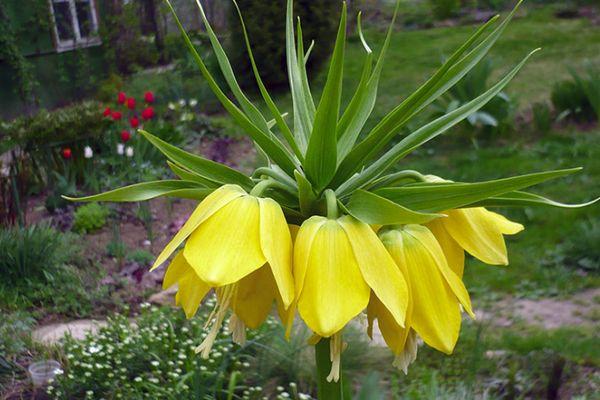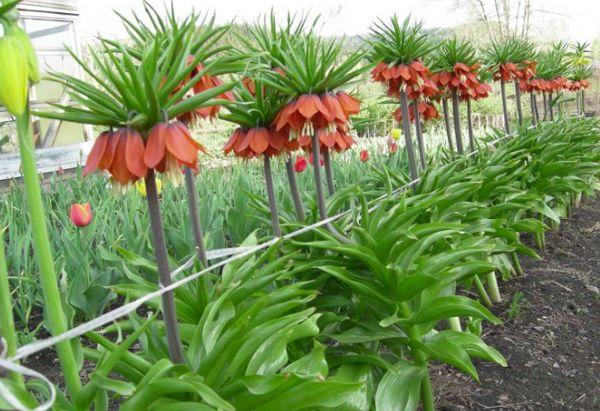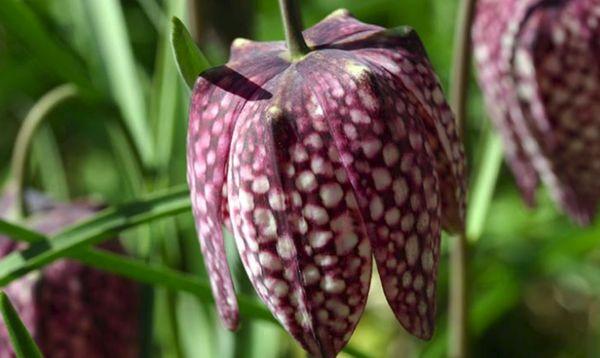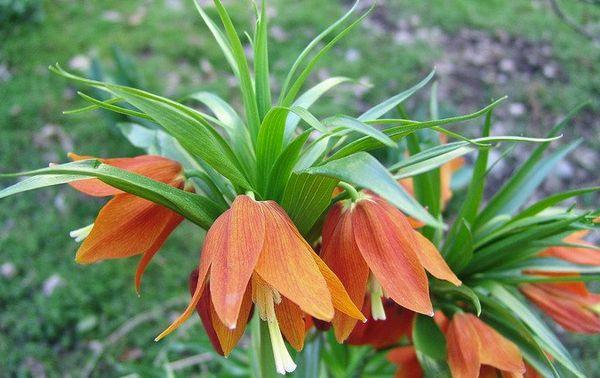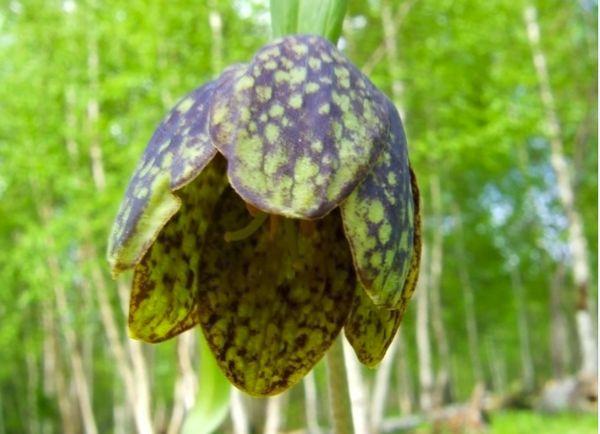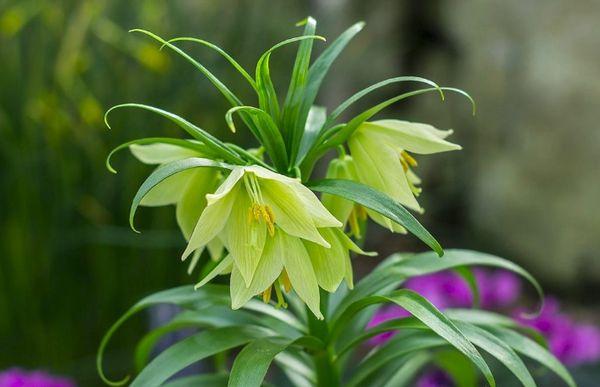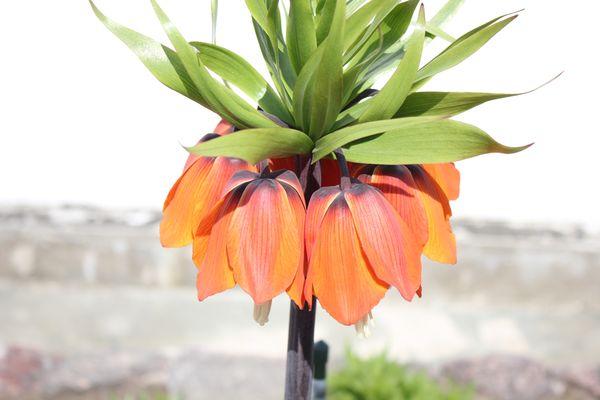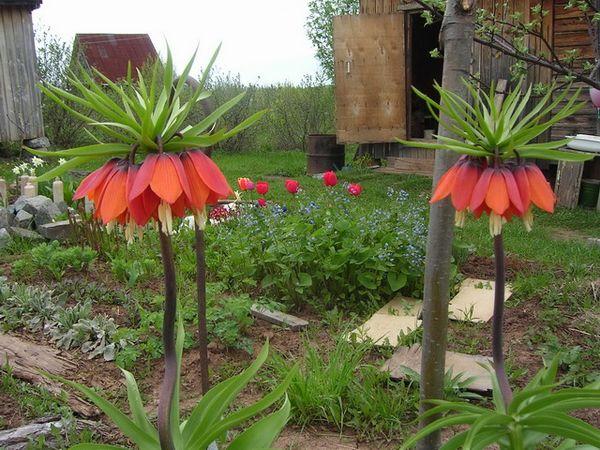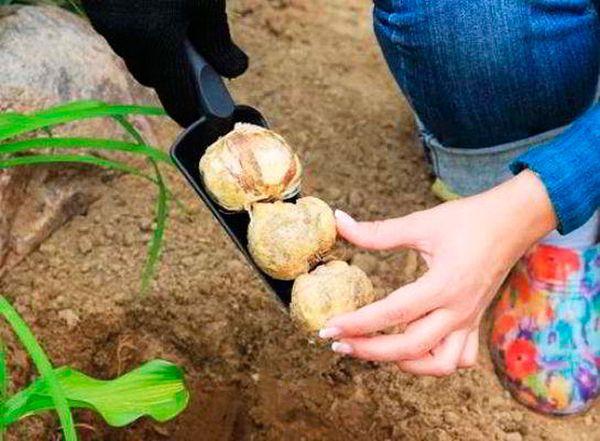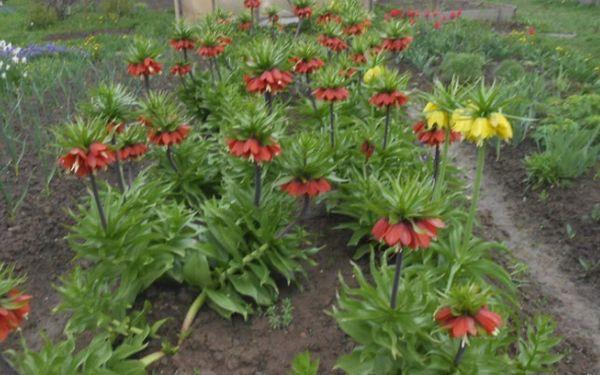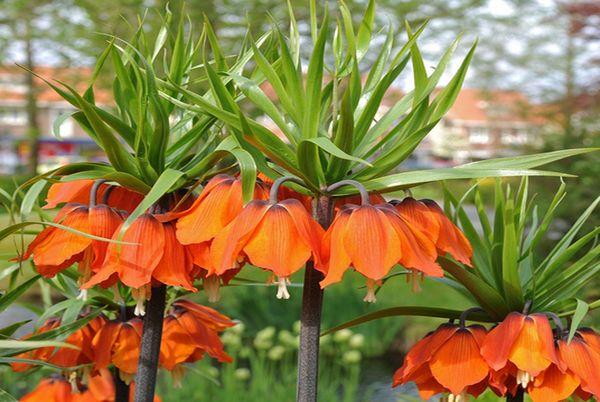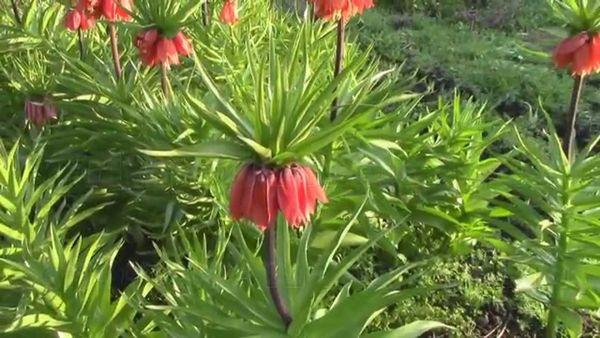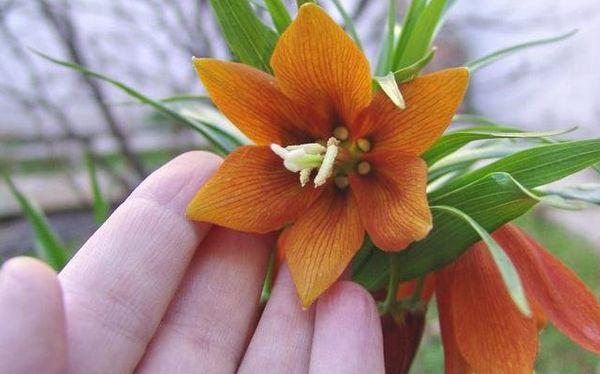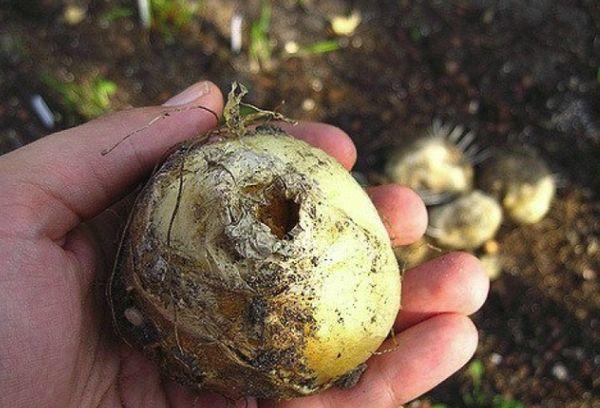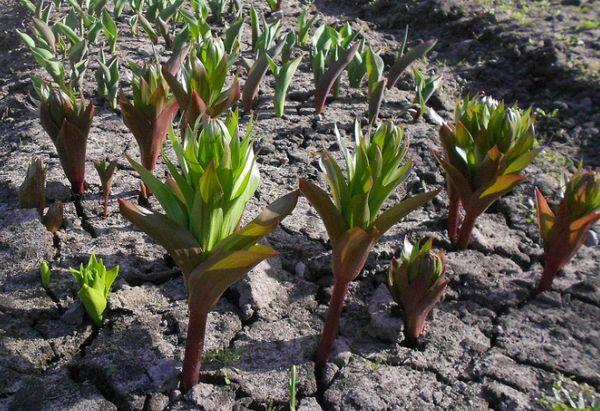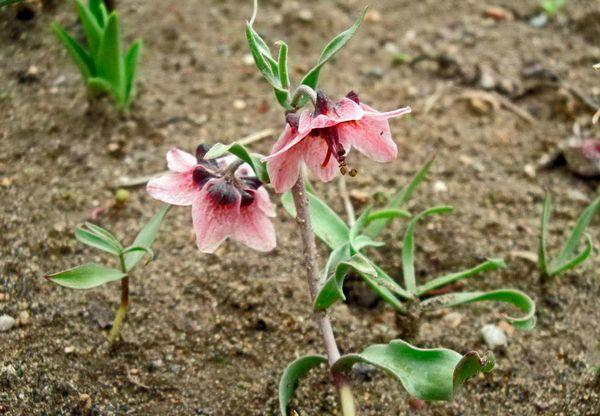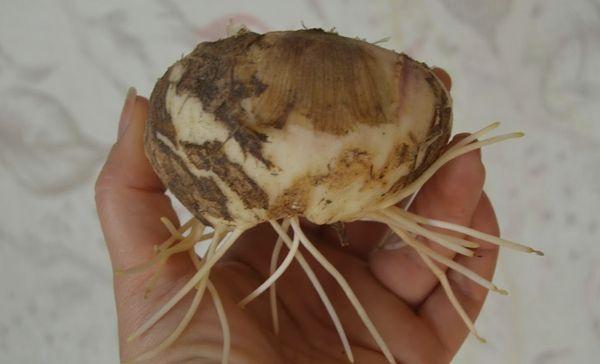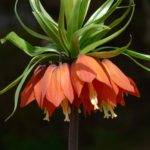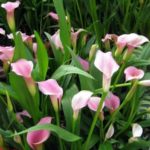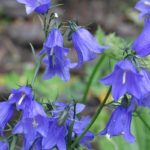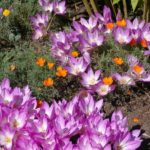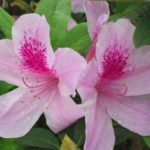The imperial hazel grouse is an excellent decoration for a flower bed, and planting and caring for the flower in the open ground will not cause too many problems. Grouse bulbs are buried in the ground in the fall, and in the spring they wait for the appearance of a tall peduncle with a lush crown of orange flowers and green leaves. This plant will liven up a dull flower bed, because it blooms earlier than other spring flowers.
- Description and characteristics
- Peculiarities
- Other types of hazel grouse
- Chess
- Mikhailovsky
- Kamchatsky
- Edward
- Assyrian
- Persian
- Davis
- Dagana
- Benefit
- Types and varieties of royal
- Raddeana
- Rubra
- Strip Beauty
- Garland Star
- Lutea
- Aurora
- Premier
- Prolifera
- Sulferino
- William Rex
- Aureomarginata
- Argenteovariegata
- Landing
- Deadlines
- Soil preparation
- Disinfection of seed material
- Selecting a location
- Planting scheme
- How to replant
- Care and cultivation
- Watering
- Mulching and shelter for the winter
- Careful care in spring
- Top dressing
- Diseases and pests
- Reproduction
- Vegetative method
- Seed method
- Main difficulties
- Improper care
- Freezing
- Transfer
- Onion rattle or lily beetle
- Digging and proper storage of bulbs
- Application in landscape design
- Reviews
Description and characteristics
Imperial (royal) hazel grouse is a perennial tall herbaceous plant from the Liliaceae family. Carl Linnaeus gave it the name - Fritillaria imperial. This large bulbous crop has long been growing in the mountainous regions of Asia, the eastern Himalayas, subalpine meadows, and Afghan ridges.
Europeans have been raising hazel grouse for almost 400 years. Holland can be considered the second homeland of this plant. It was in this country that new varieties of hazel grouse were developed.
There are 150 known species and a huge number of varieties of this plant. All varieties of hazel grouse have one characteristic feature - a tall, more than 1 meter in height, stem-peduncle, crowned with a crown of a bunch of leaves and flowers looking down, similar to the shades of a chandelier.
The flower stem reaches 1.5 meters in length. By the time it blooms, it becomes hard and straight. The stem comes out of a hole in the bulb. This large hole remains from last year's flower stalk. The stalk begins to grow in early spring, as soon as the snow melts. After 2 weeks it grows to its maximum height. Just at this time, tulips and daffodils bloom.
The peduncle is attached to the bottom of the mother bulb; below, at the base of the stem, new baby bulbs are formed. At the end of the growing season, the long stem dries out and then falls.It leaves a hole in the mother's bulb. In autumn, 1-3 buds appear in the depths of this large hole. New flower stalks grow from them next spring.
The bulb has a spherical shape. Its diameter is 10-20 centimeters. The bulb has a strong garlic smell. This part of the plant stores a supply of nutrients used for the formation of stems, leaves and flowers. The bulb also keeps the stem from falling. True, for this it must be buried in the ground to a depth of 25 centimeters.
The flowers of the hazel grouse, in an amount of 6 pieces, are collected in a single inflorescence and located at the top of the shoot. They look like bells, look down and deviate from the peduncle in different directions, then rise up a little. The color of the petals, depending on the variety, is orange, yellow, red, purple, snow-white. Flowers with long stamens and pistil can be simple or double, single-colored or variegated. Above the inflorescence there are about 20 bract leaves. Hazel grouse bloom in May for almost 20 days.
After the petals fall, instead of flowers, seed pods appear in which the seeds ripen. Ripe boxes crack. True, the seeds do not spill out of them. The boxes are facing up. The leaves are dark green, oblong, lanceolate. They are located at the bottom of the stem in 3-4 whorls, 5-8 pieces in each.
Peculiarities
Imperial hazel grouse is used to decorate personal plots in all regions of Russia, including the Moscow region. The spectacular tall spring flower is used to create alpine slides, rockeries, and flower arrangements. It has a garlicky smell, so it is better to plant the flower surrounded by tulips and daffodils.
The plant was called hazel grouse because from a distance one might think that the tall stem contains not variegated flowers, but hazel grouse birds. In Europe, the plant is called Caesar's Crown or Mary's Tears.
It reproduces mainly by bulbs, less often by seeds. The plant prefers fertilized, loose, drained soil without stagnant water. It is advisable to choose a place protected from the wind, well lit for flowers.
In the summer, after the hazel grouse has faded and the leaves begin to turn yellow, the bulbs, along with the peduncle, are dug out of the ground. Typically this event is held at the end of June. The bulbs are divided in half or separated from the mother bulbs and dried under a canopy.
In September-October, when the roots hatch, they are again buried 25 centimeters into the ground, and the soil surface is mulched on top. This procedure stimulates abundant flowering next spring. It is not advisable to plant bulbs later than November.
If planted late, flowering will be weak and the plant will not grow tall. True, the bulbs do not need to be dug up; they can grow in one place for several years. If you grow hazel grouse using seeds that have ripened by autumn, then a new flowering plant will only be seen after 3-7 years.
Other types of hazel grouse
In addition to the imperial hazel grouse, there are other types of hazel grouse. All plants have narrow leaves and drooping bright flowers located in the upper part of a straight, long peduncle.
Chess
Fritillaria meleagris is a perennial plant belonging to the genus Fritillary. It has an erect stem 30-50 centimeters high. The leaves are oblong, thin, alternately located in the upper part of the stem. The flower is often solitary, drooping, bell-shaped.
The petals have a checkerboard pattern (dark burgundy mesh on a pink or light background). The hazel grouse blooms in late May and early June for 2-3 weeks. The checkerboard hazel grouse has many varieties with varied colors. For example, Alba is a variety with snow-white flowers, Saturnus - with red-violet.
Mikhailovsky
The plant was first discovered in 1904 near Tbilisi. The scientist Fomin gave it a name - Mikhailovsky's hazel grouse. Grows up to 16-26 centimeters. There are two forms of this variety: tall - with single drooping bell-flowers and miniature - with an inflorescence of 2-3 flowers. The plant has long, lanceolate leaves. The flowers have an unusual color. The petals are burgundy on top and yellow at the edges. The tips of the petals curl outward, which gives the flower a resemblance to a lampshade or glass.
Kamchatsky
A bulbous plant reaching 35-60 centimeters in height. The leaves are arranged in whorls, 5-10 pieces each. The flowers are funnel-shaped, 3.5 centimeters long, purple-burgundy. Blooms from May to June.
Edward
Grows in Kazakhstan. Another name is Aigul. A tall plant (up to 1.5 meters), with drooping flowers and a lush bract at the top of the peduncle. The flowers are orange or scarlet, collected in a single inflorescence, 5-12 pieces in each. The leaves are oblong, located in whorls located on the stem.
Assyrian
The plant is 50 centimeters high. The flowers look like narrowed bells, located 1-2 pieces at the end of the stem. The color of the petals is dark brown, with a thin yellow border around the edges.
Persian
Plant up to 1 meter high. It has an oblong inflorescence, similar to a Christmas tree, strewn from top to bottom with buds and bell flowers. The color of the petals is dark burgundy.One oblong inflorescence can contain 20-50 flowers.
Davis
A small plant growing up to 16 centimeters in height. The variety was first discovered in Greece in 1940. The leaves are elongated, green, located at the base of the stem. The flowers are often solitary, in the form of a pale eggplant-colored bell.
Dagana
The plant is 20-35 centimeters high. It has lanceolate, oblong leaves growing from a whorl located in the middle of the stem. The flowers are solitary, drooping bells. The petals are yellowish in color, with purple or burgundy specks. Blooms in June-July. Listed in the Red Book.
Benefit
Hazel grouse have an unpleasant garlic smell. You can take advantage of this feature. For example, plant bulbs near plants whose roots are often attacked by pests or rodents. The smell of garlic will scare away uninvited guests. Hazel grouse can protect the garden from mice and moles.
Types and varieties of royal
Imperial or royal hazel grouse is represented by a huge variety of varieties. These flowers are planted in the garden plot, for decoration, or in the vegetable garden - as natural insecticides.
Raddeana
Hazel grouse with a peduncle, the height of which is 40-80 centimeters. At the top is an inflorescence consisting of 6 flowers, similar to wide-open bells. The petals of the flowers are a soft lemon or cream shade. The leaves are long, dark green, lanceolate, with curled tips.
Rubra
A tall plant with a long thick purple stem and lush inflorescence. The stem can grow up to 90 centimeters. At the top of the plant there are scarlet bell-shaped flowers, and above them there are pointed green oblong bract leaves. At the bottom of the stem grow long leaves collected in whorls.
Strip Beauty
Long-flowering variety.Blooms at the end of April and blooms until June. On a high stalk there is a lush inflorescence consisting of large golden flowers with bright red lines on the petals.
Garland Star
A bulbous plant growing up to one meter. It has large orange flowers, collected in a single inflorescence at the top of the stem. The petals are pierced with thin scarlet stripes. Above the inflorescence is a lush crown of leaves. Dark green oblong leaves are also found at the bottom of the stem.
Lutea
A tall plant, on a large, stable stem there is a lush inflorescence of bright lemon-colored, wide-open bells. It blooms once - in May.
Aurora
Tall plant, growing up to 1 meter. At the very top of the thick, long stem are orange, wide-open bell flowers. Above them is a lush crown of long green leaves.
Premier
Tall crop. At the top of the long stem is a lush inflorescence consisting of drooping flowers resembling wide-open bells. Their petals are orange, with subtle purple streaks.
Prolifera
The name of the plant translated from Latin means crown on a crown. The flowers are drooping, open bells of orange with purple veins. Above the inflorescence is a lush crown of green leaves.
Sulferino
The plant is 80-100 centimeters high. It has lush orange flowers. On the surface of the petals there is a thin scarlet mesh.
William Rex
An ancient variety, named after William III. The flowers are bronze-burgundy, with a bluish tinge. This variety has small bulbs.
Aureomarginata
Tall plant. The stems grow up to 1 meter. Does not tolerate winter well. It has bright orange-red flowers.
Argenteovariegata
A plant with a lush crown of bright orange flowers. The leaves of this variety have a silvery edge.
Landing
Hazel grouse are planted in the fall. Adult mother bulbs are used as planting material. They can be divided in half. Children that grow up near adult bulbs are also buried in the ground. They are first separated from the mother. True, they will grow for a long time (3-4 years) before they throw out the flowering stem.
Deadlines
Hazel grouse are buried in the ground in September, rarely in October. By the time of planting, small roots should appear on the bulbs. It is not advisable to bury the bulbs later than November. The optimal time for planting is dry and warm September.
Soil preparation
Before planting, it is advisable to dig up the soil, remove weeds, fertilize it with rotted compost (half a bucket per square meter of land), dilute it with peat and sand. The soil should not be heavy, clayey, cold or too wet. For planting, dig a shallow hole. A little sand is poured onto the bottom - this way you can protect the bulb from rotting.
Disinfection of seed material
Before planting, the bulbs need to be disinfected. Planting material is disinfected in a solution of fungicide (Maxim) or potassium permanganate. The bulbs are irrigated with diluted, weakly concentrated preparations.
Selecting a location
Hazel grouse are planted in a well-lit area, sheltered from the winds. It is advisable not to choose lowlands where water will accumulate after rain. Hazel grouse cannot tolerate marshy soil. From excess moisture they will begin to rot and may not bloom. It is best to plant flowers on a mound. Because of the unpleasant garlic smell, many gardeners try to plant hazel grouse in the background, in a distant bed or in the vegetable garden.
Planting scheme
Grouse grouse, depending on the age and size of the bulbs, are buried in the ground to a depth of 10-30 centimeters. Adult mother bulbs are planted deep (30 centimeters), children - close to the surface (10 centimeters). The distance to the neighboring plant should be 25-35 centimeters. It is advisable not to lay the bulbs flat, but to plant them at an angle of 90 degrees.
How to replant
The hazel grouse is dug up after it has finished flowering. The adult mother bulb and the emerging children are separated and dried all summer in a dry, shaded place at a temperature of 20-25 degrees Celsius. In September they are transplanted to a new site. Prepare the soil for the bulb (loosen and fertilize it). Dig a shallow hole, sprinkle it with sand and insert the onion there. It is covered with earth and watered with water.
Care and cultivation
Grouse need to be cared for regularly. In this case, they will bloom magnificently and will not die from pest attacks or diseases. The main thing for a gardener is to protect the bulbs from freezing in winter and not give them the opportunity to rot in the spring. To do this, before wintering, the surface where the bulbs are planted is insulated. In spring, the mulch is removed and the hazel grouse is allowed to develop quietly.
Watering
Hazel grouse do not like too moist soil. After all, their delicate bulbs begin to quickly rot in swampy soil. Flowers are watered occasionally - only during dry seasons. This plant tolerates drought and infrequent watering well. In hot weather and in case of prolonged absence of rain, flowers are watered once a week. 3 liters of water are poured under one plant.
Mulching and shelter for the winter
It is advisable to mulch the ground around the plant with sawdust in the spring. Weeds will not be able to break through from under the mulch. True, you need to leave enough open space above the bulb.Otherwise, the hazel grouse stem will not be able to germinate. Before wintering, bulbs buried in the ground are covered with dry leaves or a layer of peat and sand. It is better to use spruce branches, reeds, and straw as shelter.
The thickness of the insulating layer should be 25-30 centimeters. In winter, snow must be constantly thrown onto the place where the bulbs are buried. They will not freeze out under the snow cover and will be perfectly preserved until spring.
Careful care in spring
After the snow melts, the mulch must be removed from the garden bed. It is necessary to give the hazel grouse a chance to germinate. It is important to provide the plant with maximum sunlight. Young seedlings tolerate spring frosts well, that is, a drop in temperature to 6 degrees below zero. On cold nights, the stems freeze and droop to the ground, but in the sun they quickly come to life.
It is not advisable to touch the soil near the planted bulb. During the winter, the roots grow and rise to the surface. Loosening of the soil is not carried out so as not to damage the thin roots. The plant can be fed with humus diluted in water (0.5 liters of organic matter per 5 liters of water).
Top dressing
The very first fertilizing is done in the fall, before planting the bulbs in the ground. The soil is fertilized with rotted humus (half a bucket of organic matter per square meter of land). In the spring, just before flowering, the soil is fed with nitrogen substances (ammonium nitrate). For one plant you need: dilute 5-10 grams of fertilizer in 3 liters of water. During the flowering period, hazel grouse are fed with superphosphate and potassium nitrate. You can use complex purchased fertilizers for flowering crops.
Diseases and pests
In rainy and cool summers, hazel grouse growing in nutrient-poor soil may get sick. Most often, rot appears on the bulbs. The plant develops poorly, the leaves turn yellow and wither.In this case, the bulb needs to be dug up, rot removed, and treated with a fungicide (Fundazol). Dry it and bury it in a new place in the fall.
Bulbs can get fusarium. This fungus lives in the soil. With frequent rains, it becomes more active, affecting not only the bulbs, but also the stems, then the leaves turn yellow and wither. As a preventative measure, the plant is sprayed with a fungicide (Fitosporin, Topaz) or Bordeaux mixture.
If the bulbs are stored at temperatures above 35 degrees, developmental abnormalities may occur. For example, a double flower appears in an inflorescence. You can prevent mutation by drying the bulbs at a temperature no higher than 25 degrees Celsius.
Thanks to the garlic smell, hazel grouse do not have many pests. However, this plant can be attacked by lily rattles. Insects have orange wings. Onion rattles also attack hazel grouse. They have crimson wings. In case of danger, rattles make a sound similar to rattling. Insects and their larvae feed on leaves and flowers. Insecticides (Aktara, Bombardir) save you from them.
Hazel grouse bulbs have a dangerous enemy living in the soil. This is a wireworm, that is, the larva of a click beetle. The insect penetrates the bulb, makes passages there, and leads to rotting of this part of the plant. The addition of granular insecticidal preparations (Provotox or Rembek) into the soil helps prevent wireworms.
Reproduction
Hazel grouse are propagated by bulbs or seeds. One or more babies are usually formed on the mother's bulb. Young bulbs are separated from the old ones. They are grown separately for about 3 years. It is undesirable to leave them on the mother bulb, as they will feed on it and constantly deplete it. To obtain a peduncle for next spring, take an adult mother bulb. With the seed planting method, you will have to wait a long time for flowering (3-7 years, depending on the variety).
Vegetative method
By the end of flowering, the hazel grouse has one mother bulb and several young children. They are carefully dug out of the ground (in mid or late June). Then clean and dry for 2 weeks. After 14 days, new bulbs are separated from the old, maternal one. The cut areas are treated with a weak solution of potassium permanganate.
Then the young bulbs are grown for several years. For the first three years, the children will not bloom; during this time they increase their mass. You can divide the mother bulb into two parts and plant each part separately. It is important that each particle retains a piece of the bottom. The divided mother bulb will produce a flower stalk next spring. It is dried all summer, and in the fall it is buried to a depth of 30 centimeters.
Seed method
Seeds purchased in spring or summer are first dipped in water to swell. Then they are sown in the ground to a depth of 1 centimeter. If the seeds are obtained from hazel grouse growing on the site, then in the fall, after collection, they can be immediately sown in the ground. True, with the seed propagation method, flowers will appear only after 3-7 years.
To guarantee the receipt of planting material, the seeds are sown not in the ground, but in boxes filled with ordinary soil. All winter, containers with seeds are stored in a cool basement. In spring, the boxes are transferred to the garden and left in a sunny place. In summer, water the soil occasionally, making sure it does not dry out. Shoots hatch from the seeds and young plants appear. Soon they dry out.
In the summer, after the greenery has dried, the bulbs are dug out of the boxes and dried in a container with sand. In the fall, they are planted for the winter, like adult bulbs.True, to a shallow depth (10 centimeters), and the surface is insulated with mulch on top.
Main difficulties
Gardeners may encounter various problems during the growing process. For example, hazel grouse's leaves may turn yellow and wither. This problem occurs when affected by fusarium or leaf nematode. Fungicides (Fitosporin) and proper care help prevent fungal infections.
Improper care
If there is an excess or lack of nitrogen in the soil, the leaves may turn yellow. If the soil becomes waterlogged, the bulbs will begin to rot. If the plant does not have enough moisture, it may wilt. It is important to add sufficient fertilizer to the soil and water the hazel grouse occasionally (once a week), especially during drought.
Freezing
If the bulb freezes in winter, the plant may not bloom in the spring. This usually happens if the bulb was planted shallowly in the fall and the surface was not mulched and covered with snow. It is important to bury adult bulbs 30 centimeters into the ground. Young children planted near the surface are sprinkled with a thick layer of spruce branches or straw on top.
Transfer
It is advisable to plant the bulb in loose, loamy or sandy loam soil. If the soil is heavy and clayey, the bulb will begin to rot. In this case, it needs to be dug up and transplanted to a new place. Transplantation is carried out only in the fall (September). The dug up bulb is dried all summer. Roots may appear on it. They should not be removed.
Two weeks before transplanting, prepare the soil. The soil is dug up and fertilized with organic matter. A shallow but wide hole (30x40 centimeters) is made in the ground. The bottom of the hole is sprinkled with sand. Carefully place the onion in the hole, insert a peg and sprinkle with earth.
Onion rattle or lily beetle
These are insects that feed on the leaves, stems, buds, and flowers of hazel grouse. They gnaw leaves from the edges and gnaw holes in them. They can spoil daffodils, lilies, and spread to onions. They are somewhat similar to each other. Both beetles are brightly colored - orange or red. Insects make loud noises when they see danger. They can fall to the ground and turn over on their back; against the background of dark soil they are not so easy to notice.
These are the worst enemies of hazel grouse. Spraying with insecticides (Iskra M, Actellik) will save you from them. Typically, 5 milliliters of the drug are diluted in 5 liters of water and sprayed with the plant solution.
Digging and proper storage of bulbs
After flowering, you need to cut off the peduncle. This is done when there are no plans to propagate hazel grouse by seeds. The leaves can be left to dry. After all the greens have dried, you can cut them and dig up the bulbs. They need to be cleared of soil and washed. Then treat with a pink solution of potassium permanganate or fungicide. Then dry it and sprinkle it with wood ash.
It is advisable to store the bulbs in a box with sand or sawdust, in a dark, dry, warm (up to 25 degrees) place all summer. They can only be planted in September. By this time, roots will appear on the bulbs. They cannot be deleted. Carefully place the onion in the dug hole, slightly on its side, with the roots straightened. The top is sprinkled with earth, and before wintering - with mulch.
Application in landscape design
The imperial hazel grouse looks great in a flower bed. The plant is planted as a single flower or used in a group composition. Grouse can be planted among tulips, daffodils, and hyacinths. The unpleasant garlic smell of the bulbs will protect other elite varieties of flowers growing nearby from attacks by insects and rodents.
Hazel grouse quickly begin to grow. Their lush greenery will enliven a gloomy flower bed after winter hibernation. Tall hazel grouse with lush inflorescences at the top of the stems look like trees of paradise or exotic palm trees. They can be combined with low flowers. For example, sow in the far row.
A tall stem of hazel grouse with a lush crown of bright flowers is planted against a background of ground cover plants. Usually hazel grouse are used to decorate alpine slides. Although this plant can be planted near late-flowering peonies, phlox, and lilies. If the hazel grouse flowers fade, their leaves will revive the flower bed. Peonies or lilies will bloom later. This way the flowerbed will always look green and blooming. In summer, other flowers (gatsania, alyssum) can be planted in place of hazel grouse.
Reviews
Irina Sergeevna, 56 years old:
“I bought a hazel grouse bulb at a flower shop. I planted it in the fall and covered it with leaves on top. In the spring a flower appeared. Let me tell you right away - the smell is terrible. At the slightest breath of wind, its aroma can be heard. It's better to plant it away from home. Although it is a very beautiful and huge flower.”
Galina Viktorovna, 48 years old:
“My favorite early spring flower. Doesn't require any attention. I plant around the perimeter of the garden. It scares away moles for me. I dig up the bulbs in July, and at the beginning of October I bury them in the ground again.”

